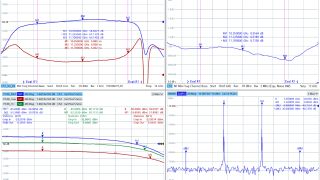Receiver and LNB characterization
The R&S®ZNA vector network analyzer enables reliable (high-gain) receiver and low-noise block converter (LNB) characterization with a R&S®ZNA two-port unit and a simple setup.

The R&S®ZNA vector network analyzer enables reliable (high-gain) receiver and low-noise block converter (LNB) characterization with a R&S®ZNA two-port unit and a simple setup.
Your task
There are several special aspects that make high-gain converter testing challenging:
Rohde & Schwarz solution
With dedicated functions such as LO tracking and twotone based group delay measurement, the R&S®ZNA enables reliable and comprehensive characterization of frequency converting devices without access to the internal LO.


Features and benefits
Summary
The R&S®ZNA provides a wide range of hardware and software features for comprehensive characterization of satellite and radar receivers. The highlights include outstanding receiver sensitivity, the unique wide power sweep range, four internal sources (plus LO out) and LO tracking. With all these features, the R&S®ZNA can handle even the most challenging tests for A&D and SATCOM applications.